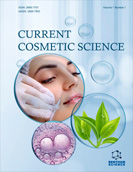Abstract
This review explains the importance of polysaccharide derivatives in removing heavy metals and dyes from contaminated materials. With rising urbanization and industrialization, the availability of heavy metals and dyes in the environment is increasing. Heavy metals can cause a variety of health problems in individuals and offer major environmental dangers. This paper uses diverse techniques to discuss the most recent improvements in metal ion and dye adsorption from wastewater. Various derivatives of natural polymers can be used as good adsorbents for removing heavy metals and dyes from industrial wastewater and treated water released into the environment, lowering the risk of human disease and environmental problems. According to literature reviews, removing heavy metal ions from industrial effluent benefits both people and the environment. Graft copolymers are the most effective heavy metal ion and dye removal adsorbents, and the majority of them obey the pseudo-first and pseudo-second-order models. Also, an overview of each grafted copolymers of polysaccharides for the adsorption of metal ions and dyes is mentioned in this review.
Graphical Abstract
[http://dx.doi.org/10.1098/rsta.2012.0406] [PMID: 24080615]
[http://dx.doi.org/10.1007/s13762-020-02764-3]
[http://dx.doi.org/10.1016/j.jclepro.2021.126589]
[http://dx.doi.org/10.1016/j.gecco.2020.e00925]
[http://dx.doi.org/10.1016/j.tibtech.2019.04.007] [PMID: 31174882]
[http://dx.doi.org/10.1080/03067319.2020.1722811]
[http://dx.doi.org/10.1016/j.watres.2012.09.058] [PMID: 23571110]
[http://dx.doi.org/10.1021/sc500848m]
[http://dx.doi.org/10.1039/D1MA00354B]
[http://dx.doi.org/10.1016/j.biortech.2016.01.078] [PMID: 26852273]
[http://dx.doi.org/10.1016/j.jhazmat.2015.03.014] [PMID: 25797927]
[http://dx.doi.org/10.1016/j.ijbiomac.2020.08.074] [PMID: 32795574]
[http://dx.doi.org/10.1016/j.biortech.2008.01.036] [PMID: 18334292]
[http://dx.doi.org/10.1016/j.jenvman.2010.11.011] [PMID: 21138785]
[http://dx.doi.org/10.1016/j.carbpol.2015.06.034] [PMID: 26256337]
[http://dx.doi.org/10.1080/03067319.2019.1673743]
[http://dx.doi.org/10.1016/j.jhazmat.2013.07.071] [PMID: 23972667]
[http://dx.doi.org/10.1016/j.cis.2014.04.002] [PMID: 24780401]
[http://dx.doi.org/10.3390/molecules26154697] [PMID: 34361855]
[http://dx.doi.org/10.1016/j.jiec.2015.06.005]
[http://dx.doi.org/10.1016/j.jiec.2014.09.005]
[http://dx.doi.org/10.1016/j.jwpe.2021.102221]
[http://dx.doi.org/10.1016/j.rser.2021.111081]
[http://dx.doi.org/10.1016/j.apt.2013.10.021]
[http://dx.doi.org/10.1016/j.carbpol.2021.118604] [PMID: 34561004]
[http://dx.doi.org/10.1007/s13762-012-0041-y]
[http://dx.doi.org/10.1016/j.molliq.2019.111793]
[http://dx.doi.org/10.1016/j.jhazmat.2019.120884] [PMID: 31352152]
[http://dx.doi.org/10.1016/j.jhazmat.2019.03.048] [PMID: 30878910]
[http://dx.doi.org/10.1016/j.ijbiomac.2020.09.046] [PMID: 32931827]
[http://dx.doi.org/10.1016/j.ccr.2016.03.004]
[http://dx.doi.org/10.1016/j.carres.2014.07.016] [PMID: 25498200]
[http://dx.doi.org/10.1016/j.carbpol.2016.11.095] [PMID: 28038738]
[http://dx.doi.org/10.1016/j.eurpolymj.2015.04.017]
[http://dx.doi.org/10.1016/j.ijbiomac.2021.07.182] [PMID: 34343587]
[http://dx.doi.org/10.2174/2213346102666150918190635]
[http://dx.doi.org/10.1007/s10311-018-00843-z]
[http://dx.doi.org/10.1016/j.chemosphere.2019.124364] [PMID: 31326755]
[http://dx.doi.org/10.1016/j.btre.2016.12.006] [PMID: 28352564]
[http://dx.doi.org/10.1016/j.susmat.2016.06.002]
[http://dx.doi.org/10.1080/01496395.2018.1503307]
[http://dx.doi.org/10.1039/C9RA01924C] [PMID: 35515526]
[http://dx.doi.org/10.1007/s13201-019-0924-x]
[http://dx.doi.org/10.1016/j.watres.2019.05.055] [PMID: 31136848]
[http://dx.doi.org/10.1016/j.jece.2018.11.040]
[http://dx.doi.org/10.1260/02636170360744380]
[http://dx.doi.org/10.1016/j.scitotenv.2019.04.237] [PMID: 31054415]
[http://dx.doi.org/10.3923/jest.2016.226.237]
[http://dx.doi.org/10.1007/s13201-019-0973-1]
[http://dx.doi.org/10.1016/j.desal.2009.08.007]
[http://dx.doi.org/10.1002/mame.201500399]
[http://dx.doi.org/10.1016/j.clet.2021.100209]
[http://dx.doi.org/10.1007/s42114-018-0059-9]
[http://dx.doi.org/10.3390/w12072032]
[http://dx.doi.org/10.3390/w10111672]
[http://dx.doi.org/10.1016/j.carbpol.2018.04.072] [PMID: 29801852]
[http://dx.doi.org/10.1039/D1TB00628B] [PMID: 33928990]
[http://dx.doi.org/10.1016/j.carbpol.2020.117095] [PMID: 33142633]
[http://dx.doi.org/10.1016/j.carbpol.2019.114989] [PMID: 31320081]
[http://dx.doi.org/10.1007/s11356-015-4547-y] [PMID: 25921759]
[http://dx.doi.org/10.1016/j.carbpol.2016.05.064] [PMID: 27474569]
[http://dx.doi.org/10.1016/j.seppur.2016.09.023]
[http://dx.doi.org/10.1016/j.jssc.2017.04.034]
[http://dx.doi.org/10.1016/j.watres.2007.09.024] [PMID: 17980401]
[http://dx.doi.org/10.1007/s10853-018-2018-9]
[http://dx.doi.org/10.1016/j.jcis.2018.01.070] [PMID: 29408114]
[http://dx.doi.org/10.1016/j.molliq.2017.02.050]
[http://dx.doi.org/10.1016/j.jhazmat.2020.122383] [PMID: 32369889]
[http://dx.doi.org/10.1007/s13201-011-0014-1]
[http://dx.doi.org/10.14233/ajchem.2013.14786]
[http://dx.doi.org/10.1016/j.carbpol.2021.117687] [PMID: 33593560]
[http://dx.doi.org/10.1016/j.colsurfb.2019.04.064] [PMID: 31059984]
[http://dx.doi.org/10.1016/j.ijbiomac.2020.08.014] [PMID: 32768479]
[http://dx.doi.org/10.1016/j.carbpol.2011.06.041]
[http://dx.doi.org/10.1016/j.carbpol.2015.04.064] [PMID: 26076615]
[http://dx.doi.org/10.1016/j.polymer.2018.05.071]
[http://dx.doi.org/10.1016/j.jhazmat.2011.02.013] [PMID: 21398031]
[PMID: 27819009]
[http://dx.doi.org/10.1021/bk-2015-1206.ch015]
[http://dx.doi.org/10.1080/23311843.2016.1275089]
[http://dx.doi.org/10.1016/S0960-8524(00)00080-8] [PMID: 11272011]
[http://dx.doi.org/10.1016/j.cej.2011.04.016]
[http://dx.doi.org/10.1016/j.jconrel.2017.03.016] [PMID: 28284833]
[http://dx.doi.org/10.1007/s12010-018-2797-0] [PMID: 29882194]
[http://dx.doi.org/10.1007/s10965-021-02558-2]
[http://dx.doi.org/10.1007/s11802-020-4069-1]
[http://dx.doi.org/10.1002/app.22801]
[http://dx.doi.org/10.1002/app.34899]
[http://dx.doi.org/10.1155/2017/6470306]
[http://dx.doi.org/10.1016/j.ijbiomac.2020.01.038] [PMID: 31917218]
[http://dx.doi.org/10.1007/s10924-020-01651-9]
[http://dx.doi.org/10.3390/ma14123277] [PMID: 34198504]
[http://dx.doi.org/10.1080/15422119.2020.1783311]
[http://dx.doi.org/10.1039/C4DT00330F] [PMID: 24658793]
[http://dx.doi.org/10.1080/19443994.2015.1061453]
[http://dx.doi.org/10.2166/wst.2019.358] [PMID: 31799951]
[http://dx.doi.org/10.1080/00986445.2018.1521390]
[http://dx.doi.org/10.1016/j.ijbiomac.2018.11.058] [PMID: 30439424]
[http://dx.doi.org/10.1016/j.seppur.2018.07.089]
[http://dx.doi.org/10.3390/jcs5020046]
[http://dx.doi.org/10.5185/amlett.2016.6061]
[http://dx.doi.org/10.1007/s10924-016-0825-0]
[http://dx.doi.org/10.1016/j.ijbiomac.2018.06.155] [PMID: 29972768]
[http://dx.doi.org/10.1016/j.ijbiomac.2018.06.171] [PMID: 30009903]
[http://dx.doi.org/10.1016/j.reactfunctpolym.2013.12.003]
[http://dx.doi.org/10.1016/j.carbpol.2020.117195] [PMID: 33183635]
[http://dx.doi.org/10.1016/j.carbpol.2016.08.017] [PMID: 27561533]
[http://dx.doi.org/10.1016/j.biortech.2013.12.110] [PMID: 24461334]
[http://dx.doi.org/10.1016/j.radphyschem.2017.01.019]
[http://dx.doi.org/10.1016/j.ijbiomac.2017.02.091] [PMID: 28263811]
[http://dx.doi.org/10.1016/j.reactfunctpolym.2017.02.001]
[http://dx.doi.org/10.1007/s00396-017-4042-8]
[http://dx.doi.org/10.1016/j.ijbiomac.2017.04.116] [PMID: 28472686]
[http://dx.doi.org/10.1016/j.ijbiomac.2018.02.024] [PMID: 29421492]
[http://dx.doi.org/10.1016/j.ijbiomac.2017.09.111] [PMID: 28965968]
[http://dx.doi.org/10.1016/j.cej.2014.11.015]
[http://dx.doi.org/10.1016/j.jcis.2016.01.019] [PMID: 26802278]
[http://dx.doi.org/10.1016/j.cej.2014.08.019]
[http://dx.doi.org/10.1016/j.jcis.2013.05.007] [PMID: 23755995]
[http://dx.doi.org/10.1016/j.jtice.2015.01.004]
[http://dx.doi.org/10.1016/j.ijbiomac.2014.02.007] [PMID: 24530325]
[http://dx.doi.org/10.1016/j.carbpol.2014.12.024] [PMID: 25659674]
[http://dx.doi.org/10.1016/j.radphyschem.2019.03.002]
[http://dx.doi.org/10.1039/C7RA02646C]
[http://dx.doi.org/10.1016/j.carbpol.2017.10.012] [PMID: 29103491]
[http://dx.doi.org/10.1016/j.matlet.2017.07.090]
[http://dx.doi.org/10.1016/j.carbpol.2017.12.014] [PMID: 29254002]
[http://dx.doi.org/10.1007/s00289-017-2136-6]
[http://dx.doi.org/10.1016/j.molcatb.2017.01.001]
[http://dx.doi.org/10.1016/j.matchemphys.2018.01.019]
[http://dx.doi.org/10.1016/j.ijbiomac.2019.05.059] [PMID: 31082422]
[http://dx.doi.org/10.1016/j.jenvrad.2016.08.014] [PMID: 27569449]
[http://dx.doi.org/10.1016/j.carbpol.2017.05.097] [PMID: 28732868]
[http://dx.doi.org/10.1016/j.carbpol.2017.10.072] [PMID: 29253964]
[http://dx.doi.org/10.1007/s10570-016-1162-0]
[http://dx.doi.org/10.1016/j.seppur.2018.09.011]
[http://dx.doi.org/10.1016/j.ijbiomac.2017.05.052] [PMID: 28526344]
[http://dx.doi.org/10.1016/j.jece.2016.03.006]
[http://dx.doi.org/10.1016/j.carbpol.2015.03.015] [PMID: 25933540]
[http://dx.doi.org/10.1021/acs.jced.6b00340]
[http://dx.doi.org/10.1021/ie404135y]
[http://dx.doi.org/10.1016/j.chemosphere.2015.07.078] [PMID: 26298027]
[http://dx.doi.org/10.1016/j.ijbiomac.2014.12.020] [PMID: 25542168]
[http://dx.doi.org/10.1016/j.carbpol.2019.115396] [PMID: 31635743]
[http://dx.doi.org/10.1016/j.jece.2018.09.021]
[http://dx.doi.org/10.1016/j.ijbiomac.2018.02.126] [PMID: 29476854]
[http://dx.doi.org/10.15376/biores.10.2.3112-3130]
[http://dx.doi.org/10.1002/app.42035]
[http://dx.doi.org/10.1016/j.fpsl.2016.05.008]
[http://dx.doi.org/10.1016/j.ijbiomac.2019.06.243] [PMID: 31279059]
[http://dx.doi.org/10.3390/gels8010023] [PMID: 35049556]
[http://dx.doi.org/10.1016/j.carbpol.2016.06.064] [PMID: 27516248]
[http://dx.doi.org/10.1016/j.carbpol.2020.117213] [PMID: 33278978]
[http://dx.doi.org/10.1016/j.ijbiomac.2019.09.044] [PMID: 31499105]
[http://dx.doi.org/10.1016/j.jclepro.2021.128221]
[http://dx.doi.org/10.1088/2053-1591/ab0072]
[http://dx.doi.org/10.1016/j.scitotenv.2018.05.286] [PMID: 29859440]
[http://dx.doi.org/10.1016/j.ijbiomac.2019.03.116] [PMID: 30902714]
[http://dx.doi.org/10.1016/j.jtice.2018.09.002]
[http://dx.doi.org/10.1039/D0NJ01871F]
[http://dx.doi.org/10.1016/j.carbpol.2018.07.011] [PMID: 30143176]
[http://dx.doi.org/10.1155/2020/6679960]
[http://dx.doi.org/10.1016/j.carbpol.2012.05.053] [PMID: 24751054]
[http://dx.doi.org/10.1007/s10965-020-02271-6]
[http://dx.doi.org/10.1016/j.ijbiomac.2021.04.079] [PMID: 33865891]
[http://dx.doi.org/10.1016/j.cej.2014.06.024]
[http://dx.doi.org/10.1021/acsami.0c03689] [PMID: 32383581]
[http://dx.doi.org/10.1016/j.carbpol.2022.119179] [PMID: 35287899]
[http://dx.doi.org/10.3390/polym13071089] [PMID: 33808111]












